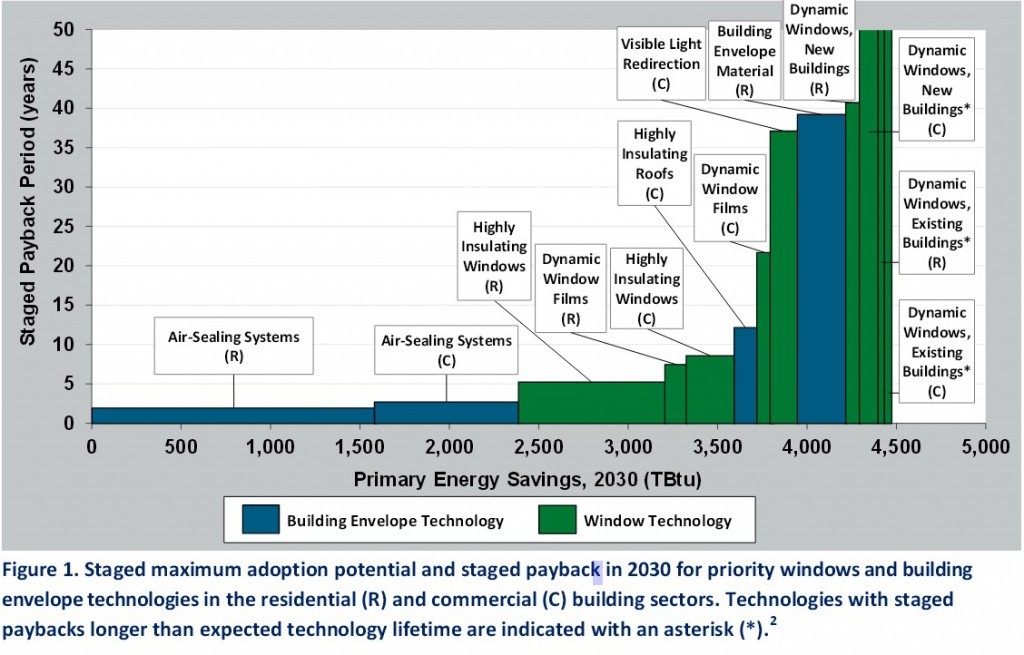The US federal government’s confidence in window film continues.
Besides funding a new rating system, the Department of Energy (DOE) recently released a report “Windows and Building Envelope Research and Development: Roadmap for Emerging Technologies,” which includes window film as one of those technologies.
Specifically, the report lists window film as a “high priority” research and development area, stating window films’ projected installation price less than or equal to $2 per square foot, is much more efficient than replacing an insulating glass unit. The performance target is to “demonstrate a reduction in the solar heat gain coefficient by greater than 0.4 with a visual transmittance bleached state greater than 0.6 for the residential sector and greater than 0.4 for the commercial sector.”

According to the DOE, window film has a five year payback period when used residentially and a 22 year payback period for commercial use.
This is all part of the DOE’s Building Technologies Office’s (BTO) mission “to improve the efficiency of existing and new buildings in both the residential and commercial sector through the development of high-impact energy efficiency technologies and practices.” The initiative began after President Obama’s 2013 inaugural address, in which he issued a new national goal of reducing energy losses in buildings by 50 percent in the next 20 years.
Window film will play a major role in achieving that goal, as “low-E window films have sizable technical potential savings with reasonable payback periods,” according to the report.
But the DOE isn’t the only governmental entity investing in window film. The General Services Administration (GSA), which oversees workplaces of federal employees, is also utilizing window film in its practices.
As part of its Green Proving Ground Program, the GSA has commissioned Lawrence Berkeley National Laboratory to perform real-world measurement and verification of low-E films in a pilot installation in a federally-owned building.
Findings will be available in 2016 and the full report on what’s planned can be found here.
Darrell Smith, executive director of the International Window Film Association (IWFA), says the government using more window film is a natural extension of the association’s work with the agencies.
“The IWFA works continually with both DOE and GSA on programs to utilize window film, for energy efficiency as well as for enhanced protection from flying glass fragments whenever glass breaks due to natural or manmade events,” he says. “IWFA and manufacturer representatives are invited and participate actively in information gathering and brainstorming activities sponsored by different groups within DOE.



















